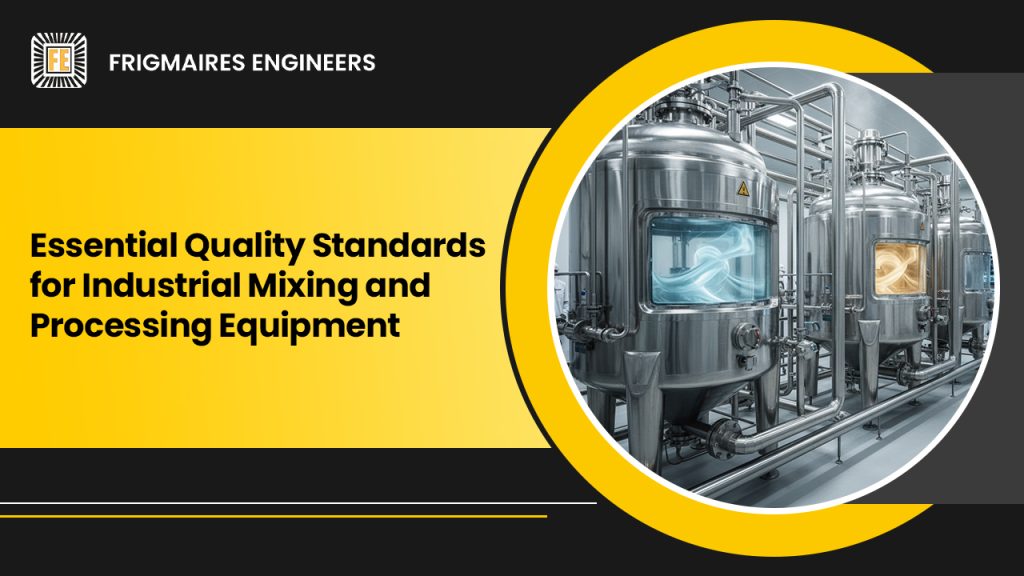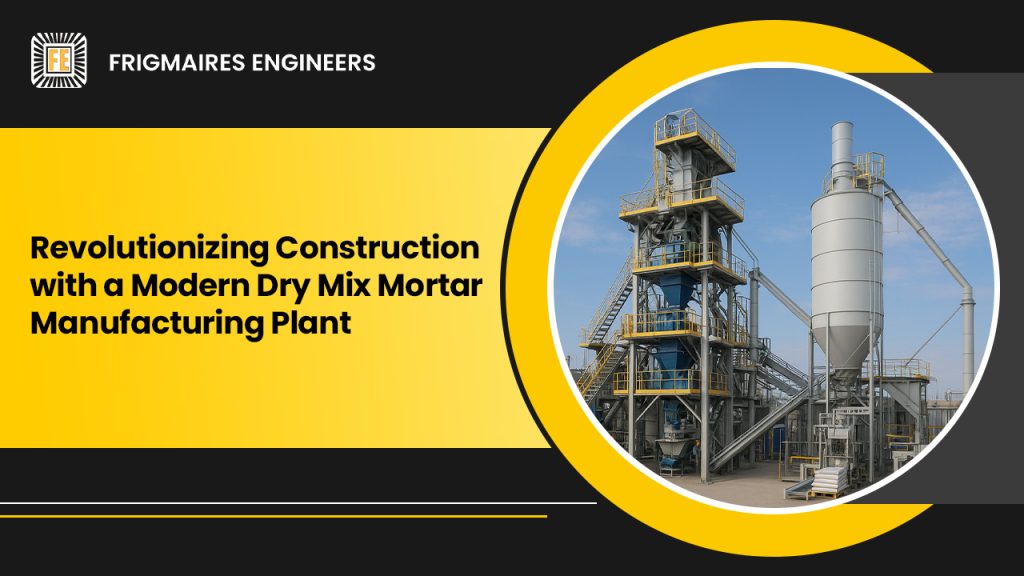Industrial mixing and processing equipment plays a crucial role across industries such as paints, coatings, lubricants, chemicals, food, and pharmaceuticals. The performance and reliability of this equipment directly impact product consistency, production efficiency, and compliance with regulations.
To ensure safe, reliable, and high-quality operations, manufacturers must follow essential quality standards when designing, fabricating, and installing mixing and processing systems. Below, we explore the key standards and practices that define world-class equipment.
1. Material and Construction Standards
The choice of construction materials directly affects the equipment’s durability, safety, and compatibility with processed substances.
- Stainless Steel Grades (304, 316, etc.): Widely used for corrosion resistance, especially in food, pharma, and chemical sectors.
- Non-Reactive Surfaces: Ensure that no contamination or unwanted reactions occur between materials and products.
- Welding and Finishing Standards: Smooth, polished welds reduce contamination risks and improve cleaning efficiency.
Compliance with ASME (American Society of Mechanical Engineers) and DIN standards ensures equipment can withstand demanding operating conditions.
2. Safety Standards
Safety is paramount in industrial environments. Equipment must comply with:
- OSHA Guidelines (Occupational Safety and Health Administration) for operator safety.
- ATEX Certification for equipment used in explosive or hazardous environments.
- Emergency Shut-Off Systems integrated into mixers and reactors.
- Pressure Vessel Compliance (ASME Section VIII) where pressurized systems are involved.
These measures protect workers, minimize downtime, and ensure compliance with global regulations.
3. Performance and Process Standards
Industrial mixing and processing equipment must deliver consistent results across every batch. Key standards include:
- ISO 9001 Quality Management: Ensures systematic design, manufacturing, and testing.
- ISO 21469 (Lubricants) & GMP (Good Manufacturing Practices): Relevant in food, cosmetics, and pharmaceutical applications.
- Validation Protocols: Standard Operating Procedures (SOPs) for testing mixing homogeneity, viscosity, shear rates, and dispersion.
Adherence to these standards guarantees repeatable performance and product uniformity.
4. Cleaning and Hygiene Standards
For industries like food, beverages, cosmetics, and pharmaceuticals, equipment hygiene is non-negotiable.
- CIP (Clean-in-Place) & SIP (Sterilize-in-Place) Systems: Allow efficient cleaning without disassembly.
- FDA & EU Regulations: Govern contact surfaces to prevent contamination.
- EHEDG Certification (European Hygienic Engineering & Design Group): Ensures equipment meets stringent hygienic design standards.
These practices safeguard consumer health and ensure regulatory approval for global markets.
5. Energy Efficiency and Sustainability
Modern plants demand equipment that minimizes energy use while maximizing productivity. Quality standards increasingly include:
- ISO 50001 (Energy Management Systems) for efficient power consumption.
- Use of energy-efficient agitators and drives to lower operating costs.
- Integration of waste reduction and recycling technologies.
By meeting these sustainability standards, manufacturers reduce environmental impact and align with global green initiatives.
6. Digitalization and Automation Standards
Smart manufacturing requires equipment that integrates seamlessly with digital systems.
- Industry 4.0 Readiness: Compatibility with IoT sensors, real-time data monitoring, and predictive maintenance tools.
- IEC Standards for automation and electrical safety.
- SCADA/PLC Integration to ensure consistent process control.
These standards enable better monitoring, reduced downtime, and improved decision-making.
7. Testing, Certification, and Documentation
Before delivery, industrial mixing and processing equipment should undergo:
- Factory Acceptance Tests (FAT) and Site Acceptance Tests (SAT).
- Third-Party Certifications (CE, UL, or equivalent).
- Complete documentation and traceability of materials, testing, and performance validation.
This not only ensures compliance but also builds trust with customers and regulators.
Frigmaires’ Commitment to Quality
At Frigmaires, we design and deliver industrial mixing and processing equipment that complies with international quality, safety, and performance standards. Our turnkey solutions are engineered to provide:
- Robust construction using certified materials.
- Energy-efficient and automated systems for modern manufacturing needs.
- Compliance with global regulations across food, chemicals, lubricants, paints, and allied industries.
- Full documentation, validation, and training to ensure seamless operation.
Conclusion
Adhering to essential quality standards is not just about compliance — it’s about ensuring productivity, safety, and long-term reliability. For industries that rely on precise mixing and processing, investing in equipment that meets international standards is a smart business decision.
By partnering with experts like Frigmaires, companies can be confident in equipment that delivers efficiency, safety, and global competitiveness — setting the foundation for sustainable growth.



